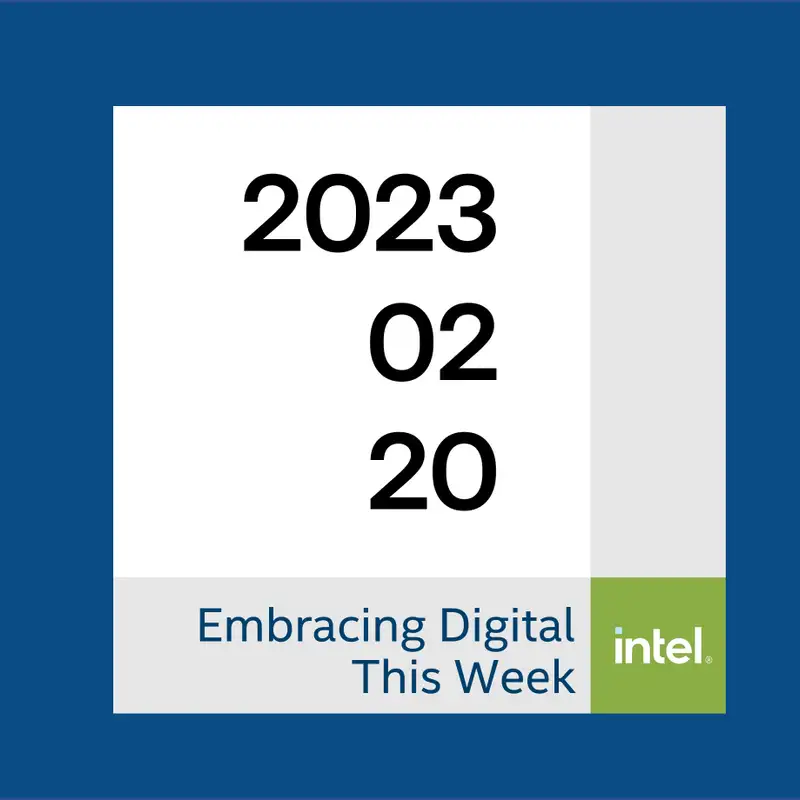February 20, 2023
Artificial Intelligence
The ethics and regulations of using generative AI-enabled Chatbots are starting to come into play as more people are starting to use ChatGPT and other. Chatbots will now need to include a Warning: We may not produce output that is real. Believe at your own risk. You revoke your right to sue us if you reproduce conversations, images, and videos for high-risk use cases that cause hate, harassment, violence, self-harm, illegal activity, deception, discrimination, or spam. https://swisscognitive.ch/2023/02/15/honest-lying-why-scaling-generative-ai-responsibly-is-not-a-technology-dilemma-in-as-much-as-a-people-problem/
As AI becomes increasingly important in various industries, the role of Chief AI Officer (CAIO) is emerging as a new addition to the C-Suite. A good CAIO should clearly define the desired impact of AI projects and continuously focus the organization on delivering that outcome. A great CAIO should also track the real impact of those projects and update the business on their performance over time. Additionally, the CAIO should be able to understand and communicate how competitors may leverage AI to disrupt the business or add new competitive pressures. This role therefore escalates the expectations for driving transformation and impact, as well as anticipating and responding to competitors' use of AI. https://applieddatascience.medium.com/the-case-for-the-chief-ai-officer-the-newest-c-suite-role-d55cca40c01
IBM’s latest supercomputer is taking several innovative new directions – it is IBM’s first AI-optimized, cloud-native supercomputer, and it is housed entirely within the IBM Cloud rather than on-premises like traditional supercomputers. Its “go-to environment for IBM Researchers creating most advanced AI capabilities, including our work on foundation models and is where we collaborate with partners to train models of many kinds.” https://futurumresearch.com/research-notes/ibms-latest-supercomputer-is-cloud-based-and-ai-focused/
Ubiquitous Compute
According to a study by 451 Research commissioned by Oracle Cloud Infrastructure, almost every cloud journey in enterprises is now becoming a multicloud journey. The study found that 98% of enterprises surveyed are using or plan to use at least two cloud infrastructure providers, and 96% reported they are using or plan to use at least two cloud application providers. The top drivers of multicloud strategies are data sovereignty and cost optimization. Enterprises are proactively planning multicloud strategies for the future, with data redundancy being the most anticipated future use case. https://www.cloudcomputing-news.net/news/2023/feb/21/98-of-firms-using-public-cloud-adopt-multicloud-infrastructure-provider-strategy/
The "supercloud," a cloud architecture that allows seamless migration of applications across different cloud providers, was first proposed by Cornell University researchers in 2016. The concept has resurfaced as a solution to the challenges of multi-cloud, providing a homogeneous network to tie cloud resources together, resulting in seamless migration, consistent security, and optimal performance. The supercloud simplifies design and operations by employing a single fabric that connects on-premises sites to the cloud, across clouds and cloud providers, allowing businesses to stay competitive. https://www.cloudcomputing-news.net/news/2023/feb/22/here-comes-the-supercloud-what-does-it-mean-for-multi-cloud-complexity/
Demand for DRAM for servers to exceed that for smartphones due to the growing use of cloud, AI, and HPC apps; DRAM content for servers forecast to increase by 12.1% YoY in 2023 compared to 6.7% for smartphones; server memory to make up 37.6% of total DRAM bit output, up from 36.8% for mobile DRAM; COVID-19 pandemic has driven demand for cloud services, resulting in sharp increase in server shipments and memory content; server DRAM capacity for smartphones limited due to supply chain issues.
Cybersecurity
Cybersecurity company Resecurity has warned of a series of cyberattacks that have targeted data centers globally over the past 18 months, resulting in data exfiltration and publishing of access credentials on the dark web. Although Resecurity did not name the victims, Bloomberg claims that major corporations, including Alibaba, Amazon, Apple, BMW, Goldman Sachs, Huawei Technologies, Microsoft, and Walmart, had their data center credentials stolen. The activity aimed to steal sensitive data from enterprises and government organizations that are customers of the data centers. Resecurity expects attackers to increase malicious cyber activity targeting data centers and customers. https://www.csoonline.com/article/3688909/cyberattacks-hit-data-centers-to-steal-information-from-global-companies.html#tk.rss_all
Cybersecurity firm Menlo Labs has uncovered an unknown threat actor group that is targeting government entities via a Discord-based campaign using the PureCrypter downloader. The campaign uses the domain of a compromised non-profit as a command and control hub to deliver a secondary payload, including the Redline Stealer, AgentTesla, Eternity, Blackmoon, and Philadelphia Ransomware. According to Menlo Labs, the group will likely continue to use compromised and taken infrastructure as long as it can, which added that leaving credentials in malware provides a trace for analysts to follow. https://www.menlosecurity.com/blog/purecrypter-targets-government-entities-through-discord
The biggest military cyber-warfare exercise in Western Europe occurred recently in Estonia, with 34 teams from 11 countries participating in a live-fire cyber battle. The seven-day event tested participants’ responses to common and complex cyber scenarios, including attacks on networks and industrial control systems (ICS). One scenario simulates attacks on uncrewed robotic systems. Teams from Italy, Estonia, and the UK were the top performers, judged based on their speed in identifying and responding to cyber threats. https://www.securityweek.com/11-countries-take-part-in-military-cyberwarfare-exercise/

